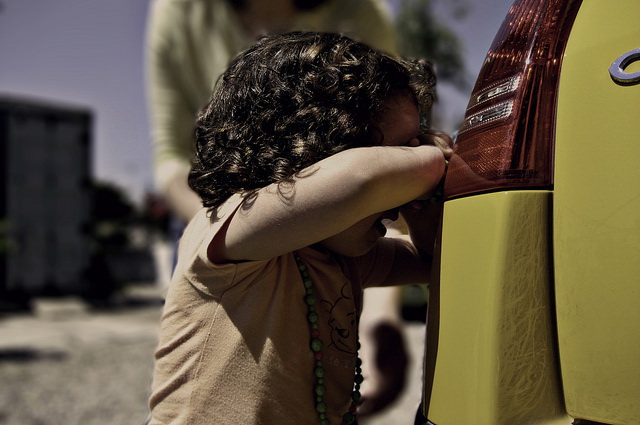Tag Archives: problem behaviour autism

Managing Behavioural Difficulties in ASD Children
Behavioural difficulties are common in children who have ASD, but with the right strategies and support, they can often be mitigated through effective management. There are myriad reasons for these difficulties, such as issues with communication, sensory processing, social interaction, and balance issues which affect active play. It’s vital that parents and caregivers understand these behaviours are not their “fault”, they are merely symptoms of the underlying difficulties the child with ASD is facing.
Understanding the Causes
The root causes of behavioural difficulties are generally as follows:
Difficulties with communication: Children with ASD typically struggle with expressive language, understanding what is being said to them, and picking up on non-verbal communication cues. This can, understandably, become quite frustrating and provoke problem behaviours.
Difficulties with social situations: The difficulties presented by social situations for a person with ASD go beyond just communication; people with ASD also struggle to understand other’s points of view (inflexible in their opinions), and grasp the “unspoken rules” of social interaction that state when to, for example, end a conversation. Due to all of this, children with ASD may shun social contact, and they are more likely to experience bullying.
Difficulties with unstructured time: People with ASD have a hard time dealing with situations where there is no set schedule, as their brains have a hard time sequencing activities on their own. For this reason, children with ASD are more likely to act out during recess or other break times, as they feel confused and frustrated.
Difficulties processing sensory information: Those with ASD often have over or under-sensitive senses, leading to a tendency to get overwhelmed or to seek stimulation to a problematic degree. They may react strongly to touch, be very picky eaters, get overwhelmed by loud noises (or be unable to concentrate over background noise), etc.
Additionally, one should always remember that people with ASD do not easily adapt to change; always be on the lookout for things in their environment or schedule that have been altered, as this may trigger problem behaviours. Illness (especially seizures, which ASD individuals may be prone to) can also trigger acting out, as the child with ASD cannot easily vocalize his or her pain. Consider using diagrams to help children express where they are feeling pain.

Troubleshooting the Refusal to Attend School in Children with Autism Spectrum Disorders
For a child with ASD, school can be a scary place. There is a lot of sensory information being thrown at the child from what feels like all angles, a high level of social interaction is required, and unstructured times (such as between classes, or at recess) can leave the child feeling lost. As such, many children with ASD develop a strong resistance to attending school, and owing to the rigidity of those with ASD, it can be very hard to convince the child to do otherwise.
No parent enjoys sending their child to a place he or she hates, and every parent wants their child to succeed at school, and to enjoy it as much as possible. To that end, it’s important not to give up on the concept of a child with ASD enjoying school; instead, if your child is resisting school attendance, try the following strategies to get him or her turned around to the idea of school again:
Try to discover why the child does not wish to attend school; remember that bullying is a common experience for those with ASD, due to their socially awkward behaviour. Always begin by making sure the child is not being picked on. Also check for:
- Unstructured times being a subject of stress and confusion.
- A specific unpleasant event which the child may now be avoiding, but has been unable to vocalize (or possibly even able to identify that he or she is so upset about it). Remember that even minor events may seem very confusing or upsetting to someone with ASD.
- A lesson or class the child is struggling with. He or she may have become so frustrated at not getting it that the entire idea of school has become upsetting.
- If your efforts come up empty, contact the school to see if any of the staff have observed something that may have motivated the child’s resistance.
If your child is having a difficult time expressing his or herself, you may want to use visual supports to facilitate communication.

How to Deal with Obsessive and Repetitive Behaviour
For many people with an Autism Spectrum Disorder (ASD), obsessions, repetitive behaviours, and routines that might appear overly rigid or unhealthy to neurotypical individuals are actually a source of comfort and self regulation. Like all things, however, when used too much, these behaviours may detract from other things or cause distress to the person with ASD, so understanding these needs and knowing where to draw a line is important. To help a person with ASD learn how to manage these issues, it’s vital to understand the behaviours’ function and how to respond to them.
Why People with ASD Develop Obsessions and Repetitive Behaviour
People with an ASD may have any number of obsessions (some of them as common as certain TV shows), but often they center around a “technical”, academic, or mechanical skill-set, such as computers, trains, historical dates or events, or science. Obsessions can become quite odd and particular, however, involving specifics about numbers or certain shapes (things like car registration numbers, for example, or bus or train timetables, and the shapes of body parts or stones). People with ASD can feel quite strongly about these things, no matter how mundane they may seem to others.
Children with ASD develop obsessions as they help to give them a sense of structure, order, and predictability, which counterbalances the chaos they may feel is inherent in the world around them. They also give a solid, sure base on which to begin conversations and break the ice with others. For these reasons, it’s vital to not label these obsessions as unhealthy by default, but rather to allow the child with ASD to explore them. One should try to understand the function of the behaviour and remain observant for signs of things going too far. Such signs include the seeming distressed while partaking in their chosen hobby, signs they wish to resist engaging in it but cannot (it’s become a compulsion), or signs it is making the child withdraw socially more than he or she normally would. Similarly, it may need to be managed if it becomes seriously disruptive to others.
Repetitive behaviour (such as hand-flapping, finger-flicking, rocking, jumping, etc.) develop quite early and may likewise appear unhealthy or troubling, but serves a therapeutic role for the child with ASD. Many suffer from sensory distortions (over or under sensitive senses), so may need the stimulation or distraction this kind of activity provides.
Understanding Routines and Resistance to Change
Those with ASD often feel confused and frightened by the complexity of life around them, due to their susceptibility to sensory overload and difficulty with understanding complex social dynamics. Developing set routines, times, particular routes, and rituals to handle daily life helps the person with ASD moderate their confusion and anxiety by making the world feel like a more predictable place; as such, people with ASD develop a strong attachment to routines and sameness.
How attached the person is, and how much distress is caused by a breach in these routines, varies with the individual; he or she may be upset by minor breaks (even as small as changing activities, or the layout of a room being changed), or need a larger, more chaotic upset, such as the disruption and stress of the holiday season. As a general rule, the more unexpected the change, the more upsetting it will be; warning those with ASD about upcoming changes and keeping calendars and timetables is often helpful.
Likewise, one should expect those with ASD to rely even more heavily on their routines during times of change or stress; as with obsessive behaviours, this reliance should be allowed, but managed so it does not become unhealthy.
